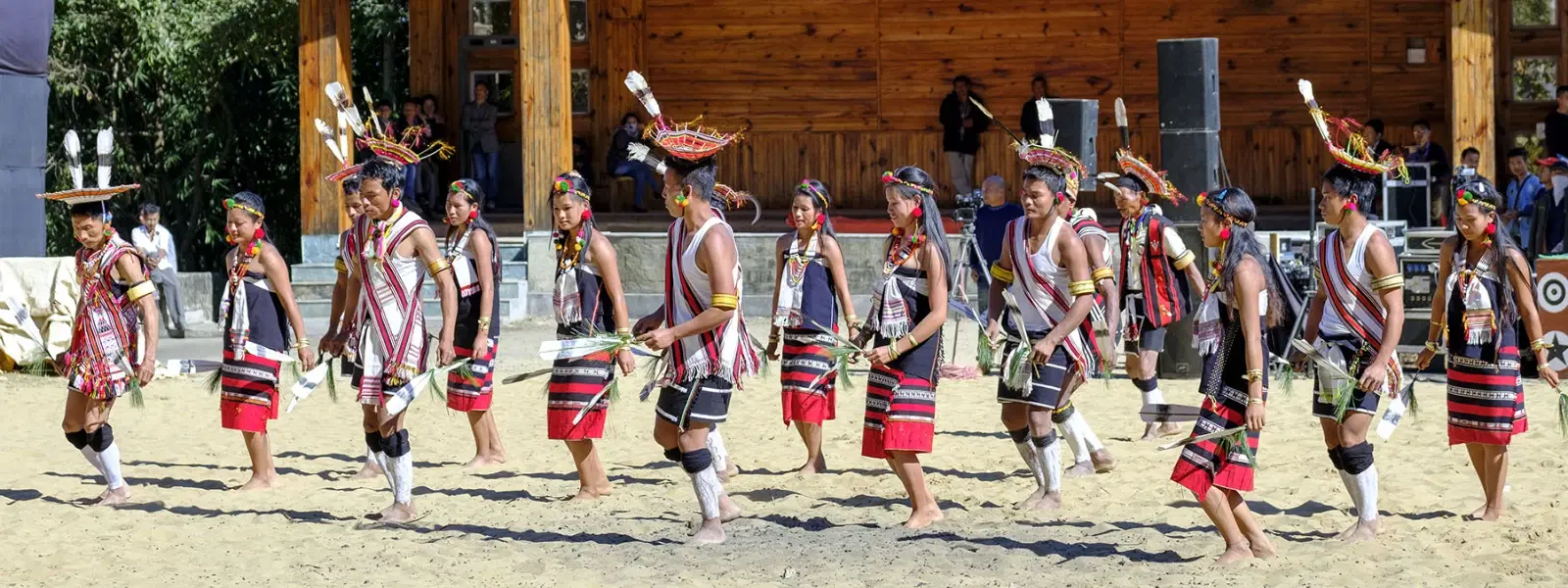
Hotels
•04 min read

Arunachal Pradesh is a treasure trove of cultural richness, and the Reh Festival stands out as a vibrant celebration of the Idu Mishmi community’s traditions. Rooted in centuries-old customs, this festival not only preserves the Idu Mishmi heritage but also invites travelers to explore rituals, music, and an unparalleled connection with nature. In this blog, you will discover answers to frequently asked questions about the Reh Festival, learn about its significance, and immerse yourself in the cultural tapestry of Arunachal Pradesh.
The Reh Festival is one of the most important traditional festivals of Arunachal Pradesh, celebrated by the Idu Mishmi community. Originating as a means to honor their gods and ancestors, this festival has evolved into a vibrant event that encapsulates the spiritual and cultural essence of the tribe.
Typically celebrated in February, the Reh Festival marks a special time in the calendar of the Idu Mishmi tribe. Its primary location is in the picturesque regions of Arunachal Pradesh, where the community gathers amidst lush landscapes and mountainous backdrops to observe this revered tradition.
The cultural and spiritual legacy of the Idu Mishmi is embodied in the Reh Festival. This celebration is not only an opportunity to indulge in traditional rituals and communal feasts but also plays a crucial role in preserving indigenous traditions. The festival reinforces a deep-rooted connection with ancestors and nature, reinforcing the Idu Mishmi heritage for future generations.
The heart of the Reh Festival lies in its time-honored rituals. Offerings to deities, traditional dances, and community feasts form the core of the celebrations. Priests, or shamans, lead these ceremonies with chants and prayers that have been passed down through generations, thus maintaining a spiritual bond with nature and the divine.
During the festival, the Idu Mishmi don their traditional attire, which is a vivid expression of their identity. This unique dress, often richly embroidered and adorned with intricate designs, carries deep symbolic meanings. Each garment and accessory not only reflects aesthetic beauty but also narrates a part of the tribe’s storied past.

What makes the Reh Festival truly special is the active participation of the Idu Mishmi community. People of all ages come together, creating a collective tapestry of music, dance, and storytelling. Such communal gatherings foster unity and offer a glimpse into the enduring spirit of this indigenous group.
The Idu Mishmi tribe is an indigenous community with a rich and unique history in Arunachal Pradesh. Their cultural traditions, passed down orally and through ritual, highlight an intricate relationship with nature and the spiritual world. Each festival and ritual is a celebration of their distinct identity and long-held customs.
In addition to the Reh Festival, the Idu Mishmi celebrate several other festivals that are integral to their cultural fabric. While each festival has its own unique flavor, the Reh Festival stands out due to its elaborate rituals and deep spiritual roots. Comparing these celebrations helps to appreciate the diversity and richness of Idu Mishmi cultural traditions.
Efforts to preserve the Idu Mishmi heritage are evident through the continued observance of festivals like Reh. Community initiatives and cultural exchanges ensure that these traditions remain vibrant even as modern influences emerge. Such practices reaffirm the importance of passing on indigenous wisdom and cultural identity to the next generations.
The Reh Festival is celebrated as one of the foremost tribal festivals of Arunachal Pradesh. It is often mentioned alongside other indigenous festivals such as Losar and Solung, each contributing uniquely to the state’s cultural mosaic. The festival not only highlights the spiritual practices of the Idu Mishmi but also underscores the broader traditions of the region.
Tourists and travel enthusiasts are drawn to the Reh Festival for its immersive cultural experience. This celebration offers a window into the soul of Arunachal Pradesh, inviting visitors to witness authentic traditions, participate in local customs, and engage in rich cultural exchanges that span generations. The festival serves as an ambassador of the state’s diverse heritage to the world.

Amid modernization, the Idu Mishmi face challenges in maintaining their traditional practices. However, there has been a mindful blend of old and new, with modern adaptations introduced to keep the festival relevant for youth. These adaptations ensure that while the essence of the festival remains untouched, it remains accessible and engaging for a broader audience.
The Idu Mishmi are known for their rich cultural heritage, including unique rituals, traditional attire, and festivals like the Reh Festival that celebrate their connection to nature and spirituality.
Arunachal Pradesh is home to numerous tribal festivals, including Reh, Losar, and Solung, which highlight the diverse cultural practices of its indigenous communities.
The Mishmi tribe's culture is deeply rooted in nature, spirituality, and community. It includes traditional ceremonies, unique attire, and festivals that celebrate their heritage.
The Reh Festival is the most prominent festival of the Idu Mishmi tribe, celebrated with rituals, feasts, and community gatherings to honor their deities and traditions.
The Reh Festival is typically celebrated in February, though exact dates may vary each year.
The Reh Festival is more than a celebration—it's a spiritual journey that connects the Idu Mishmi people to their ancestors, deities, and the natural world. It serves as a living testament to their enduring cultural identity.
The Reh Festival is a vibrant celebration of the Idu Mishmi community's heritage, rituals, and spiritual journey. It not only preserves ancient cultural traditions but also showcases the diversity of Arunachal Pradesh to both locals and visitors. Through its rituals, attires, and communal celebrations, the festival plays a crucial role in maintaining a living cultural legacy that continues to inspire and educate future generations.